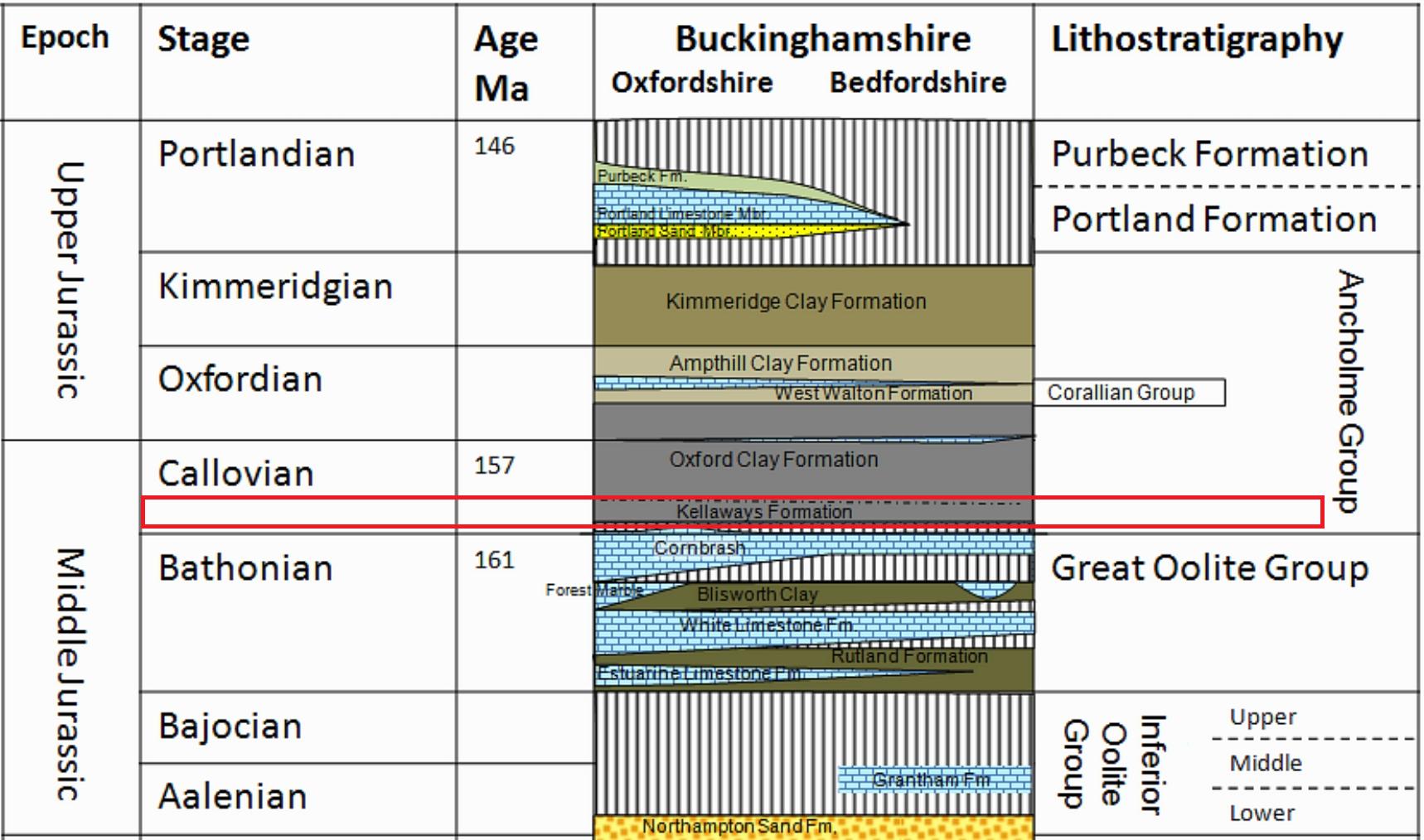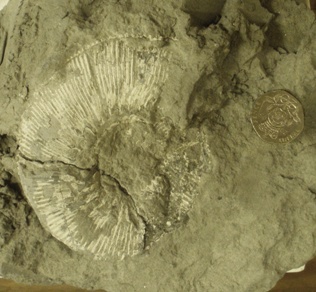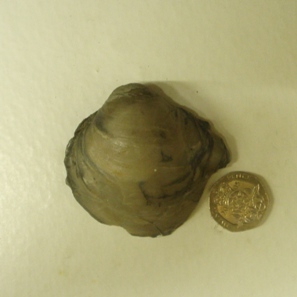|
Bucks Geology GroupKellaways FormationThe combined thickness of the Kellaways Formation and the Oxford Clay Group is about 100m in Buckinghamshire, of which the Kellaways Formation amounts to some 5m at the base.Together, they usually underlie flat, wet poorly-drained land, often with a veneer of glacial material. Although the Kellaways Clay was dug locally for brick-manufacture (eg at Coombs, in Thornborough parish) exposures are rare nowadays. The Formation is divided into a lower, Kellaways Clay and an upper, Kellaways Sand Member. Fossils are common, particularly bilobate examples of the oyster Gryphaea. Ammonites from these beds provide reliable dating to the Lower Callovian Stage (Macrocephalus and Calloviense Zones). 
Diagram above: Stratigraphy of the Middle and Upper Jurassic in Buckinghamshire (Kellaways Formation highlighted).A small exposure of the basal Kellaways Clay can be seen at Coombs Quarry, where it rests upon an eroded surface of Cornbrash Limestone. The top of the Formation was previously frequently exposed in drainage ditches in the base of the Oxford Clay brick-pits at Calvert and near Bletchley. Examples of the ammonite Sigaloceras and bivalve Gryphaea from the latter locality are illustrated below.
Hover cursor over photograph for label.
|


 Sigaloceras sp and Gryphaea sp from the top of the Kellaways Sand Member,
Newton Longville, near Bletchley.
Sigaloceras sp and Gryphaea sp from the top of the Kellaways Sand Member,
Newton Longville, near Bletchley.
